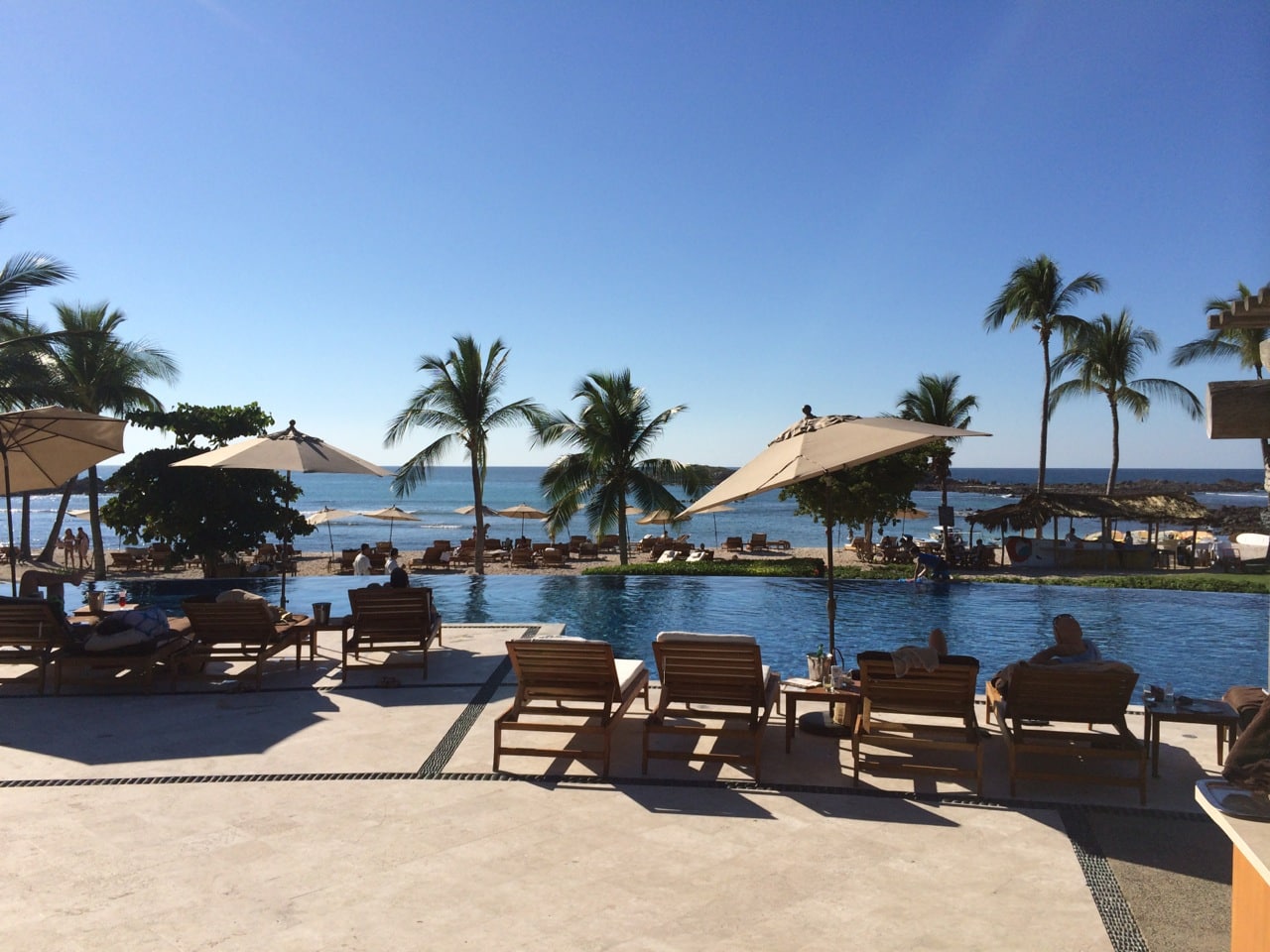We are fortunate to have a great country just to the south to visit, Mexico. I’m writing this on our trip from MYF (Montgomery Field, San Diego) to Puerto Vallarta (MMPR), a 4.5 hour flight with friends in their Piper Meridian with one stop in Ciudad Obregon (MMCN) for fuel and our AOE (Airport of Entry). I’ve flown to Mexico in various aircraft from single pistons, to turbines. All very enjoyable trips.
We have always found welcoming people, reasonable fuel prices similar to the US, and nice places to visit. Whether you are flying VCR or IFR in a C172 or a Cessna Citation you will have an amazing experience.
Preparing to go
Prep your plane
It is a good time to do a very thorough check before your flight. While maintenance it’s available at some airports in Mexico , it is not as easy to obtain service as the U.S. I always take extra oil when flying outside the U.S. When flying turbine aircraft that require anti-icing additives such as Prist, take enough cans for your flights since most fuel providers do not have it available and if they do, it can be expensive. Don’t risk fuel icing in flight, with the high humidity it isn’t unusual to land and have extensive condensation on the wings after high altitude flying.
A 406 MHz ELT is now required in Mexico for all aircraft. If you don’t have one, it is a no-brainer even for flying within the U.S. A 406 MHz ELT may make the difference between being found or not, since 121.5MHz is not being actively monitored by search organizations and the new ELTs can provide an extremely accurate position.
We always fly with extra water and food, and carrying a survival kit which includes a portable NAV/COM can be a great idea if flying over sparsely populated areas.
Paperwork
Insurance. Some, but not all, domestic policies provide the required Mexican liability coverage so check with your broker. If they do, obtain a Spanish translation of the coverage. When in doubt a supplemental plan is available through many brokers as well as Baja Bush Pilots ($250-275/yr).
Make copies of your required insurance coverage, registration, airworthiness, and for good measure you license and medical. The Mexican officials generally don’t keep the copies any more, however it can make it easier to have them readily available. I keep several copies in the airplane, including proof of our 406 ELT registration and FCC Radio Station License, even though no one has ever asked to see the later in our 34 years of international flying!
Mexico requires the purchase of a single-use or multi-entry aircraft permit. The price ($1699 Pesos (2019)), is the same for either version, so always opt for the multi-entry version. Pre-fill a worksheet with your information (make/model, owner name and address, pilot (certificate type/number, address) ) before you go and simply hand it to the Commandante at your first Mexican AOE.
While most airports will accept credit cards (M/C and Visa), sometimes the credit machines do not work. I always take enough Pesos to pay all of my initial charges, including fuel in case I run into issues. I generally get Pesos through my local bank, however you should check. I was surprised recently to find out that every BofA branch in San Diego was unable to provide Pesos since the exchange staff at each branch were on vacation!
Effective 2010, they will not accept U.S. currency for payment, though you may find exceptions. If you can’t pay by credit card, and you don’t have Pesos, it may require you go into town to obtain the necessary cash. It is also advisable to call your credit card company and let them know you will be traveling to Mexico to avoid disallowed charges.
Flight plans
You can file your international flightplan through the FSS, Fltplan.com, Foreflight, DUAT/DUATS, or a host of other providers. In Mexico in addition to using V(ictor) and J(et) airways, they use their their own nomenclature for U(pper) routes e.g. UJ, UT. If filing through Fltplan.com, Foreflight, and others, you will see recent and recommended routes which will include the Mexican Airway nomenclature, even if you are flying VFR it is a very handy reference.
You can write ‘ADCUS’ (advise customs) in remarks, however it appears to be archaic, and I never rely on it as a way to advise customs.
U.S. Customs
Establish an APIS account , if you don’t already have one. Our government, and now others, require approval of your crew and passengers before leaving the country, and returning. You will need to file a flight manifest at least one hour before you leave the U.S. as well as a return manifest at least one hour before you re-enter the US. Mexico has started the implementation of their own version, and you must file before entering their country.
After your first U.S. APIS filing, you will find it much easier on subsequent trips. You can enter your manifest through the APIS site or use one of the commercial sites, such as Fltplan.com, Baja Bush Pilots, or flashpass.net. The U.S. APIS site (which is free) allows you to store crew information for future flights, but not passengers. All except the U.S. APIS site will also simultaneously file the required Mexican APIS report. If you fly frequently, especially with the same folks, the other providers allow you to store all of the information and make the process extremely easy, for a small fee.
I frequently file both outbound, and return APIS manifests at the same time, since you can always update them if your plans change.
The Flight
You open your IFR flight plan when you depart and are simply transferred to Mexican ATC when crossing the border. On this trip we left KMYF (Montgomery Field – San Diego) as we would on any IFR flight. MYF tower cleared us for takeoff, then handed us off to SOCAL Departure. just prior to entering Mexico, we contacted Tijuana Approach, then we’re handed off to Mexican ATC Center and cleared to FL270.
If you are flying VFR, open your flight plan with the FSS and I suggest you use flight following which is one of the easiest methods of transitioning to Mexican ATC. I always asked our ATC to help with the process, and it goes smoothly. Just make sure you contact the Mexican ATC before entering their airspace.
Flying IFR is simple and usually you are quickly cleared to you requested altitude or flight level. Typically when within 40 miles of your destination you are told radar service terminated and contact airport approach. Approach control generally don’t have radar, so you are usually asked to report your position, both on arrival and departure. Frequently they want reports at 25 and 10 nm. The airport approach control person may also be the tower, and ground controller. Also don’t be surprised to find ATIS if they have one) out of service.
If you are flying VFR, you typically will be on your own after the initial contact with Mexican ATC near the border. If you are flying to a towered airport contact them at least 25 miles out. For a non-towered airport, use common frequencies to announce your intentions. In any case, don’t expect anyone to look for you if you fail to show up or close your flight plan. There are no automatic search and rescue services for overdue VFR flight plans, another good reason for an adequate survival kit.
After landing
Remember to be flexible, and patient. Some of the processes below may be handled differently at some airports. A smile and relaxed attitude will make the process easier!
There are handlers (typically the FBO) that can help with the paperwork, for a service charge of $300-400 for a light turbine and substantially more for jets. They smooth the process, however I enjoy doing the process myself and interacting with the airport personnel, which is relatively easy. If you have two pilots on board, they can both be listed as crew which has the advantage of lower visa fees, in some cases.
There are five entities that you interact with upon an international arrival:
- Customs
- Immigration
- SENEAM (Mexican ATC)
- Commandante (Commandancia de Aeropuerto)
- Airport operations cashier
- Fuel
- Military
On domestic flights omit the first two.
After opening the cabin door on your international arrival, you are greeted by the armed military soldiers who register each landing. After showing them your pilot license, you will write your name, aircraft information, departure airport, and souls on board on his clipboard. The soldiers typically don’t speak English, however the process is simple and they are very cordial.
Customs may meet you at the plane with a K-9 member of their force to check for contraband. The dog will briefly sniff inside your plane and maybe your luggage. On this trip the customs officers inspected our luggage at the airplane, however passengers on an adjacent aircraft had to take their luggage into the terminal. In either case it is an efficient process.
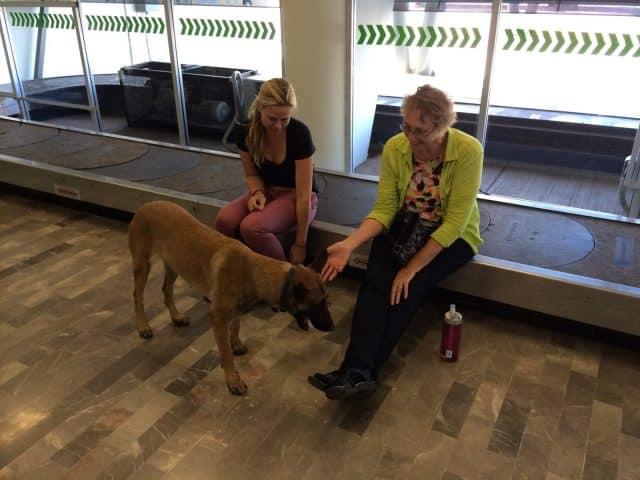
K9 Officer Guarding Our Passengers at MMCN – with her ball!
Process Steps
Visit SENEAM and close your flight plan. You will complete a short Mexican flight arrival form (Cierre De Plan De Vuelo). At the same time you can file the flight plan (Plan de Vuelo) for your next leg, if applicable. If you have two pilots on board, provide their certificate information on the forms since crew do not pay visa fees if staying for less than 8 days. You then take these forms to obtain stamps from:
- Immigration
- Customs
- Commandante
- Airport Operations Cashier
Immigration
A simple process, show the officials your passports and fill out the immigration forms for crew and passengers. A recent change is you pay for your visa upon arrival – 306 pesos ($24 USD) per person, except of course crew if your visit is less than one week. Upon departing Mexico you will pay a small fee for each person ($61 pesos), again the same exception applies to crew.
Customs
Since you probably cleared customs earlier, they will stamp your flight plan forms.
Visit the Commandante
The Commandante will need to see your pilot license, medical, insurance, and entry permit before stamping your forms. If this is your first visit to Mexico in the calendar year you will need to obtain a single use or multi-entry permit ($1383 Pesos – just increased in 2014). They are both the same price, so I always opt for the multi-entry version.
Cashier
You will pay a landing fee (also called wing tax) based upon the size of your aircraft. We paid (162 Pesos – $12.62 USD) for our Meridian on our last visit. In addition you will pay ATC fees and an hourly charge for parking, with the first hour included in your landing fee. The ASA (Aeropeurtos y Servicios Auxiliare) cashier will collect the fees, including fuel if you purchased any, then place their stamps on your forms.
Fueling
I suggest you fuel after landing rather than before departure to avoid any delays before your next flight. Mexico is no longer the lowest price in North America. Expect to pay 100LL prices similar to home, however Jet-A1 is somewhat less expensive. I use contract fuel services when flying turbines in Mexico which provides the best price and avoids the credit card surcharge of 4%. I always carry enough Pesos to pay at least a load of fuel, in case the credit card machines are inoperative, especially since they will not always accepts foreign currency.
You return your stamped flight plans to SENEAM and either start your visit or hop in your airplane for your next flight.
Puerto Vallarta
The flight from Ciudad de Obregon to Puerto Vallarta was beautiful. 25 nm out from PV we were cleared for the VOR DME 2 RW22, which is an interesting DME arc with multiple transitions.

Puerto Vallarta VOR DME Approach
Upon landing we parked in the GA transient area, closed our flight plan, and immediately refueled the Meridian. It is an easy walk to the main terminal to pick up a rental car. Driving in Mexico can be a bit hectic, however it was a blast navigating some of the narrow streets.
Puerto Vallarta is one of our favorite large Mexican cities. Great beaches, reasonable hotels, good food and beautiful scenery. There are more beaches than you could explore if you stayed a month, from good surfing spots to idyllic calm waters along the bay. To the north approximately 30 km, Sayulita is a quaint beach town with warm water and good surfing. As with many small beach towns, the parking is scarce on the narrow streets so we recommend you park a few blocks away and walk. We rent a table and umbrella from one of the vendors and then enjoy the swimming and fresh food and cold coconuts!
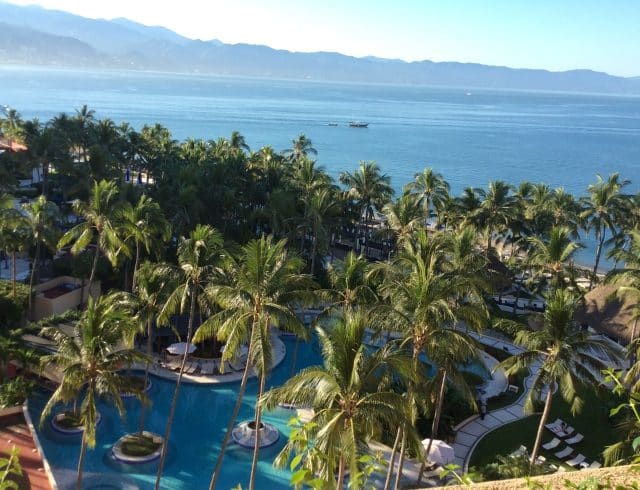
Westin Resort View Puerto Vallarta
To the north approximately 30 km, Sayulita is a quaint beach town with warm water and good surfing (some times!). As with many small beach towns, the parking is scarce on the narrow streets so we recommend you park a few blocks away and walk. Some tourists decided to take a short cut!
We rented a table and umbrella from one of the vendors and then enjoyed the swimming and fresh food and cold coconuts!
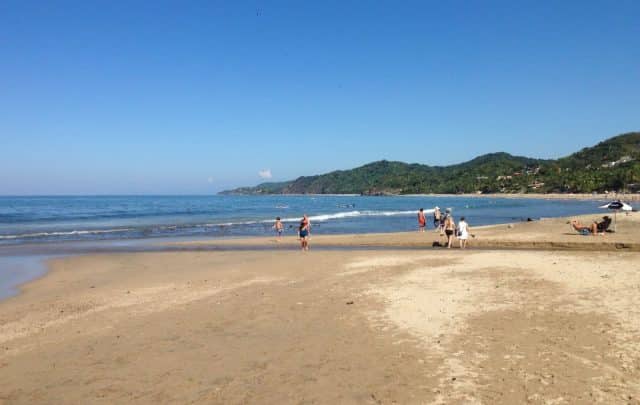
Sayulita Mexico
There are also some great beaches on Punta Mita which is south of Sayulita, however you either must have a reservation at the Four Seasons or St. Regis or talk your way in, as we did by obtaining a reservation at a restaurant. They have an incredible golf course and several restaurants with good views.
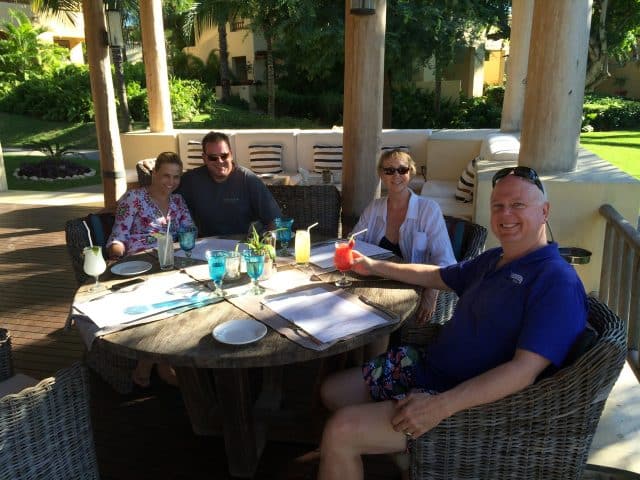
The Gang at St. Regis Punta Mita
Closer to PV are dozens of beaches, ranging from good surf locations to glass smooth water in Bucerias. One great beachside restaurant is Mare y Sol, in the center of the village.
A visit to Old Town PV is definitely worth the time. Located 20 minutes south of the airport, they have a lovely Malecon along the water, with several night clubs, many restaurants, and a number of street artists. Sometimes you can see tourists climbing the sculptures!
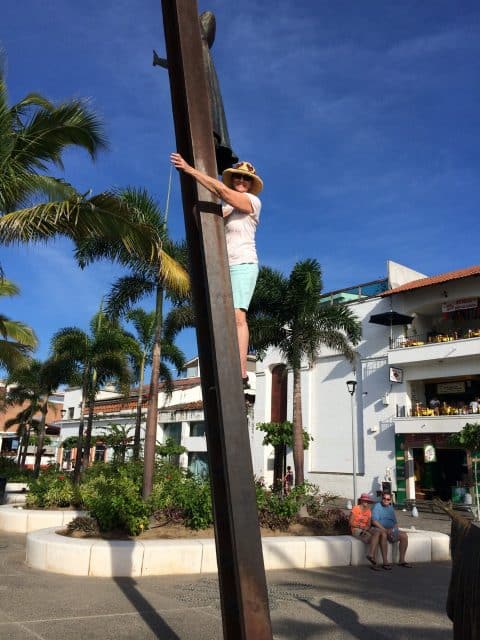
Jane Climbing the Sculpture at PV
Returning to the US
Departing PV is easy, especially since we stopped in Obregon (MMCN) to obtain fuel, and clear outgoing immigration. SENEAM picked up our flight plan from fltplan.com and we used that information to create our intra-Mexico flight plan.
At Obregon we followed virtually the same process we did upon entering Mexico, except this time we paid the passenger exit fees at Immigration, showed our documents, re-filed for our AOE in the US (Brown Field, San Diego – SDM) with SENEAM. Since we were flying IFR, the transition from Mexican to US ATC was seamless. Over Tijuana, our ATC took control of our flight, directed us in position for a visual approach, and we landed at Brown. If you are flying VFR, ensure you contact both Mexican ATC near the border, then U.S. ATC when directed.
U.S. Customs/Immigration was expecting us since we had file our APIS prior to leaving the U.S. and I had called them by cell phone in Obregon to update our arrival time – just in case!
